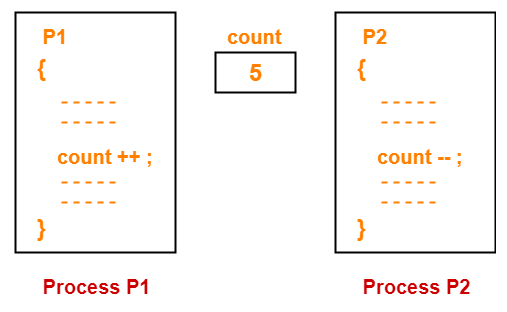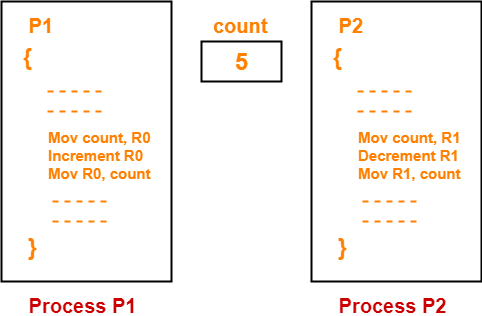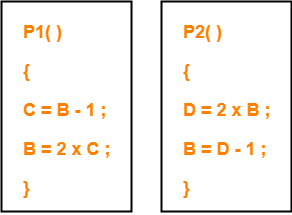Critical Section-
Before you go through this article, make sure that you have gone through the previous article on Process Synchronization.
We have discussed-
- Process Synchronization controls the execution of processes running concurrently so as to produce the consistent results.
- Critical section is a part of the program where shared resources are accessed by the process.
Critical Section Problem-
- If multiple processes access the critical section concurrently, then results produced might be inconsistent.
- This problem is called as critical section problem.
Synchronization Mechanisms-
| Synchronization mechanisms allow the processes to access critical section in a synchronized manner to avoid the inconsistent results. |
For every critical section in the program, a synchronization mechanism adds-
- An entry section before the critical section
- An exit section after the critical section
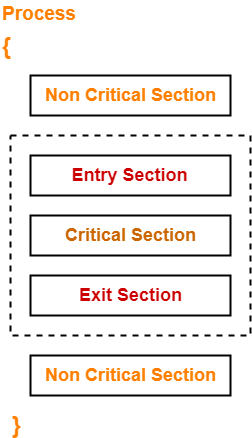
Entry Section-
- It acts as a gateway for a process to enter inside the critical section.
- It ensures that only one process is present inside the critical section at any time.
- It does not allow any other process to enter inside the critical section if one process is already present inside it.
Exit Section-
- It acts as an exit gate for a process to leave the critical section.
- When a process takes exit from the critical section, some changes are made so that other processes can enter inside the critical section.
Criteria For Synchronization Mechanisms-
Any synchronization mechanism proposed to handle the critical section problem should meet the following criteria-
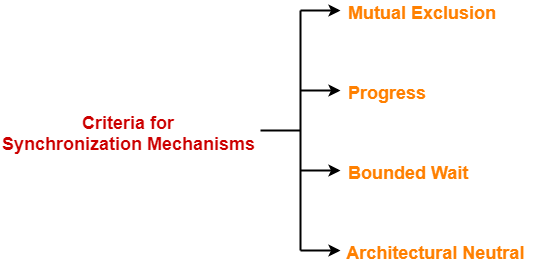
- Mutual Exclusion
- Progress
- Bounded Wait
- Architectural Neutral
1. Mutual Exclusion-
The mechanism must ensure-
- The processes access the critical section in a mutual exclusive manner.
- Only one process is present inside the critical section at any time.
- No other process can enter the critical section until the process already present inside it completes.
2. Progress-
The mechanism must ensure-
- An entry of a process inside the critical section is not dependent on the entry of another process inside the critical section.
- A process can freely enter inside the critical section if there is no other process present inside it.
- A process enters the critical section only if it wants to enter.
- A process is not forced to enter inside the critical section if it does not want to enter.
3. Bounded Wait-
The mechanism should ensure-
- The wait of a process to enter the critical section is bounded.
- A process gets to enter the critical section before its wait gets over.
4. Architectural Neutral-
The mechanism should ensure-
- It can run on any architecture without any problem.
- There is no dependency on the architecture.
Important Notes-
Note-01:
- Mutual Exclusion and Progress are the mandatory criteria.
- They must be fulfilled by all the synchronization mechanisms.
Note-02:
- Bounded waiting and Architectural neutrality are the optional criteria.
- However, it is recommended to meet these criteria if possible.
To gain better understanding of Critical Section in OS,
Next Article- Lock Variable | Synchronization Mechanism
Get more notes and other study material of Operating System.
Watch video lectures by visiting our YouTube channel LearnVidFun.
